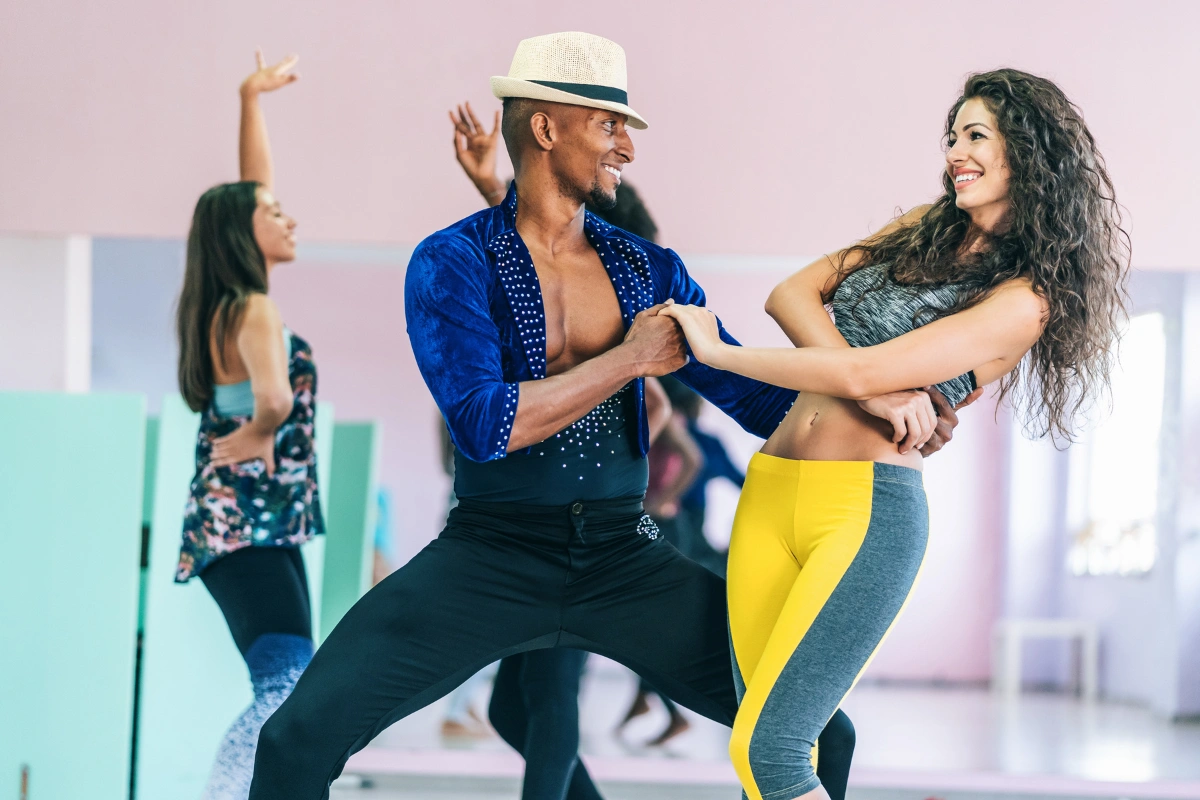Salsa is a lively and energetic dance style that originated in the Caribbean, particularly in Cuba, and gained popularity in Latin America and the United States during the 20th century. It combines various musical influences, cultural elements, and dance styles, resulting in a vibrant and rhythmic experience. Here’s a detailed overview of salsa:
- Origins: Salsa music and dance have roots in Afro-Cuban rhythms, jazz, and other Latin American music styles. The term “salsa” was popularized in the 1960s and 1970s, especially in New York City, where Cuban, Puerto Rican, and other Latin American communities blended their musical traditions.
- Music: Salsa music typically features a lively rhythm, characterized by the use of instruments like trumpets, trombones, piano, bass, and percussion instruments such as congas, timbales, and bongos. The music has a syncopated beat, which creates a festive atmosphere, making it ideal for dancing.
- Basic Steps: Salsa dancing generally follows a simple pattern of steps, often incorporating the following elements:
- Basic Step: The most fundamental step involves a three-step pattern: step forward on one foot, step back on the same foot, and replace weight on the opposite foot.
- Timing: Salsa is typically danced on counts 1-2-3, 5-6-7, with pauses or breaks on counts 4 and 8.
- Footwork: Dancers often incorporate intricate footwork, spins, and turns, creating a dynamic and expressive style.

- Styles of Salsa: There are several styles of salsa, each with its own characteristics and influences:
- Cuban Salsa (Casino): Originating in Cuba, this style emphasizes circular movements and often involves partners moving in a circular fashion.
- LA Style: This style is characterized by a flashy, linear approach with strong turns and spins, often danced in a slot formation.
- New York Style: Also known as “Mambo,” this style incorporates intricate footwork and emphasizes body movement and connection with the partner.
- Colombian Salsa (Cumbia): This style incorporates elements of cumbia and other folk dances, characterized by playful footwork and a lively rhythm.
- Social Dance: Salsa is often danced in social settings, such as clubs, dance studios, and festivals. It encourages interaction between partners, allowing for improvisation and creative expression.
- Competitions and Performances: Salsa has a competitive aspect, with numerous dance competitions and performances showcasing skilled dancers. Professional salsa dancers often create choreographed routines that blend various styles and techniques.
- Cultural Significance: Salsa dance and music are integral to Latin American culture and identity. It celebrates community, joy, and self-expression, often bringing people together in social gatherings.
- Learning Salsa: Many people take salsa dance classes to learn the basic steps, improve their skills, and connect with others who share an interest in the dance. The welcoming atmosphere of salsa dance events makes it accessible to dancers of all levels.
Read more here: WHAT IS SALSA DANCE?

Leave a reply